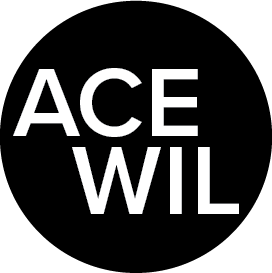In June 2020, while we were all striving to grasp the impact of the COVID-19 pandemic on opportunities for WIL students and adjust our plans, the BC WIL Council (BCWC) decided to take action by reaching out directly to existing WIL employers and community partners to better understand their experiences, needs and intentions.
The three-stage undertaking included two surveys and focus groups, and was administered through UBC’s Planning and Institutional Research Office under the direction of a BCWC Steering committee, chaired by Julie Walchli, BC WIL Council Chair, and Executive Director, Work-Integrated Education and Career Initiatives, UBC Arts.
Now, the final results are available to help you with planning as the BC recovery kicks into high gear.
Quick facts:
- The survey was distributed by 19 participating post-secondary institutions to existing WIL employers and community partners
- The first survey ran during September and October 2020, with 1,494 respondents
- Focus groups were held during March and April 2021
- The final survey ran during May 2021, with 853 respondents
Here are the top takeaways:
1. The outlook for WIL post-pandemic is promising
Overall, Spring 2021 survey respondents expect to be at 98% of their usual WIL hiring for the next 6-12 months, with certain BC regions, industries and types of WIL surpassing 100%. This is a marked improvement compared to the Fall survey, where survey respondents reported an overall 74% of their usual WIL hiring during the first six months of the pandemic.
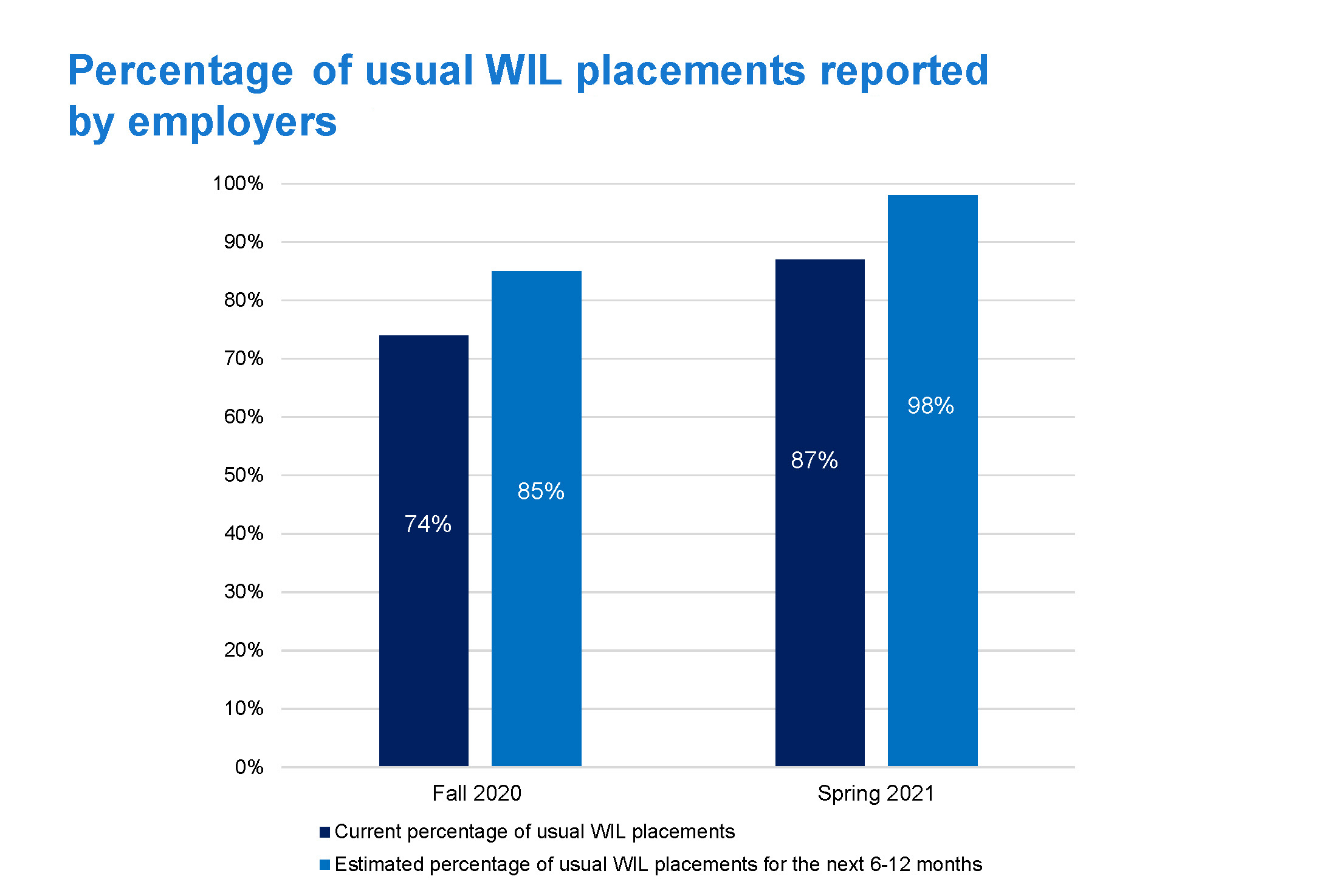
2. Remote work is here to stay, with hybrid approaches on employers’ radar
By comparing Fall 2020 and Spring 2021 results, we can see the shift to remote work as a result of the pandemic. While some of that change may be the result of health agencies requiring closures, the shift from in-person to hybrid work also reflects how employers were able to adapt to remote work as the pandemic wore on, allowing more students the option to work at least part of the time away from the workplace.
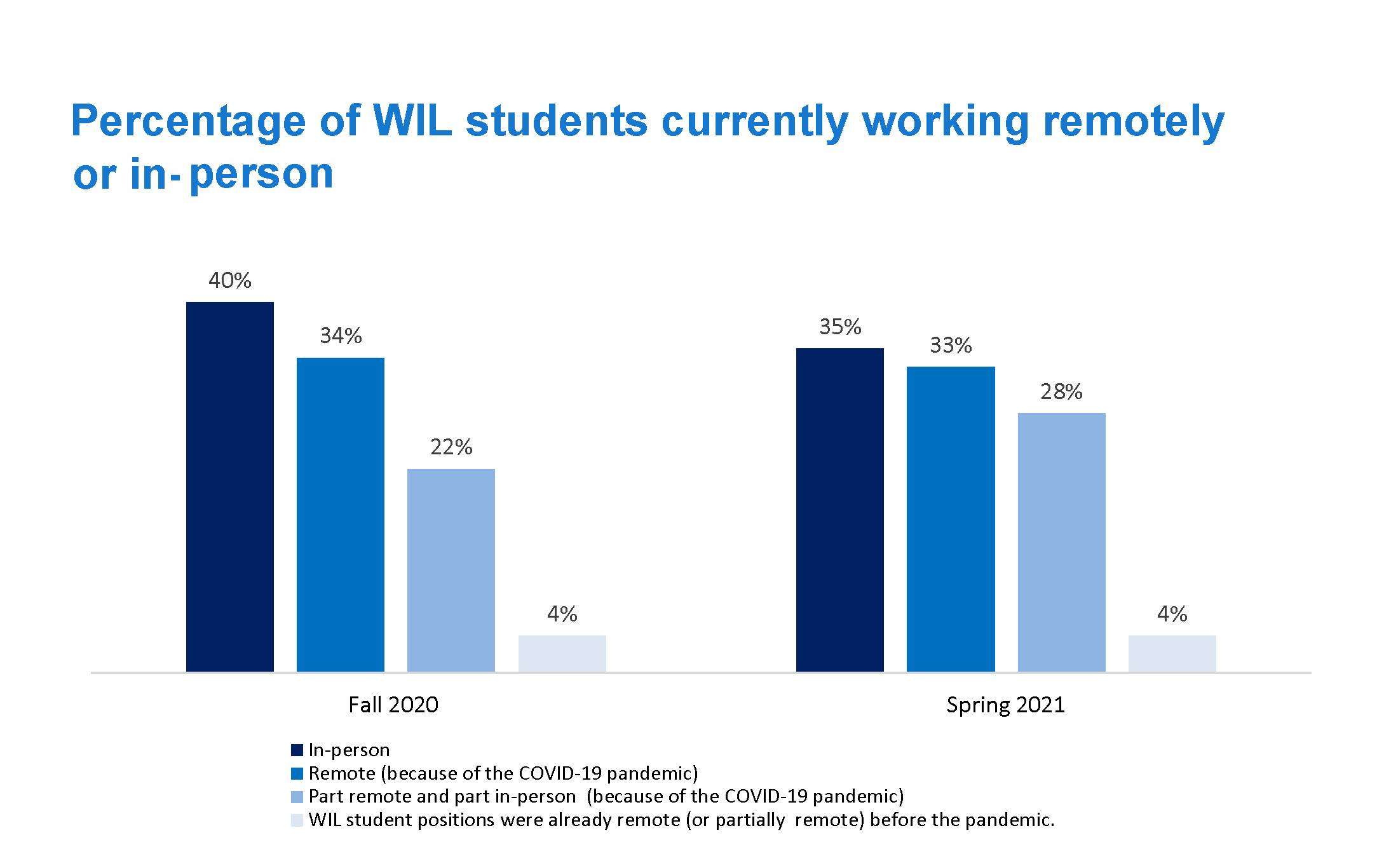
This shift to remote work is underscored by Spring 2021 survey respondents who were asked about their intended approach to WIL once the pandemic is over. Although most (48%) plan to have WIL students return to in-person work, 18% plan to have students continue to work in a hybrid model and 4% plan to continue to have students work remotely.
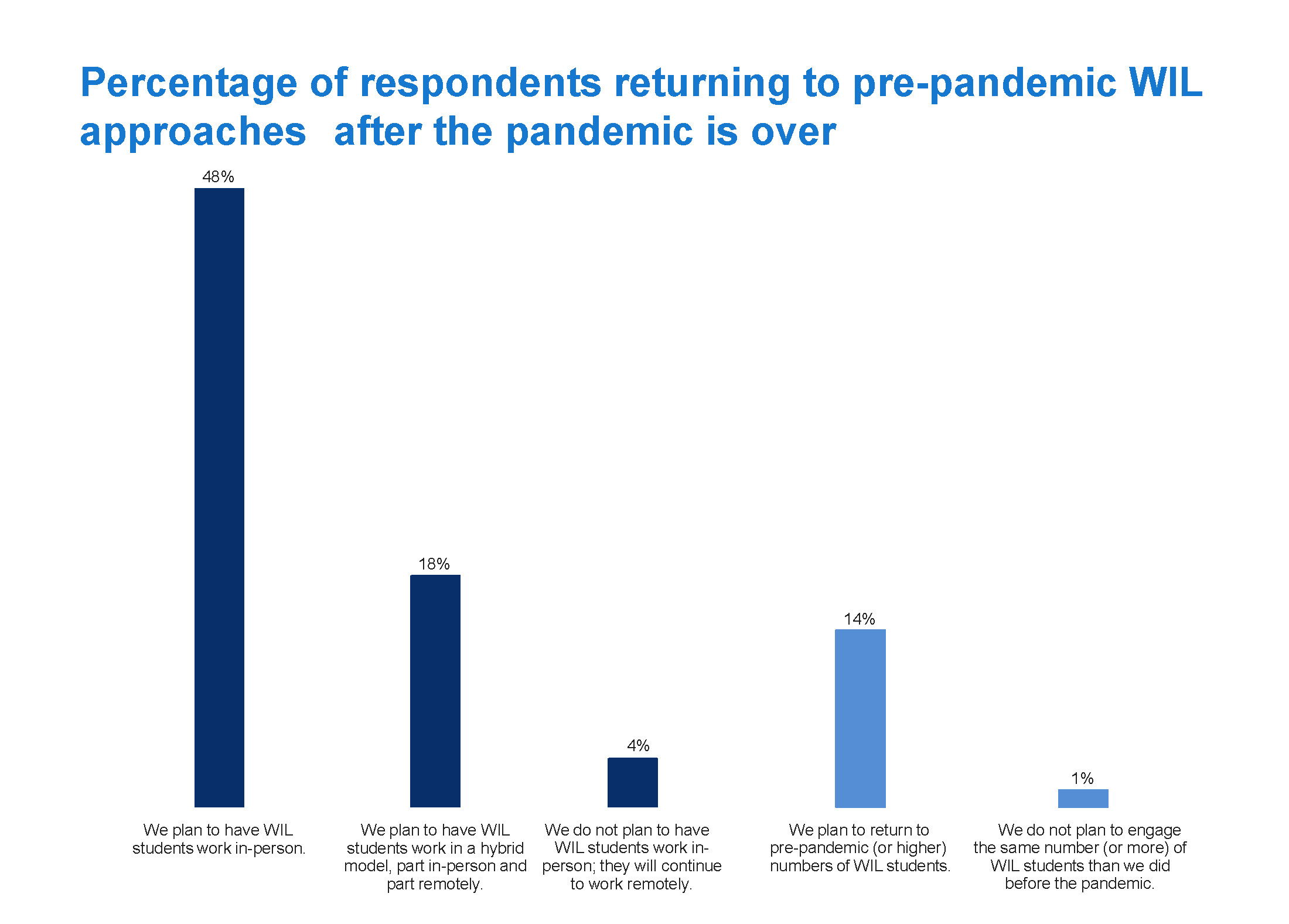
During focus groups, several employers noted how the in-person experience was an important learning opportunity for WIL students, and of course, some WIL work cannot be performed remotely, as with apprenticeships. However, there is an unmistakable cultural shift towards remote and hybrid work, and employers who now have systems in place and pandemic learnings to draw from will benefit by providing these options. Post-secondary institutions and WIL programs will want to offer skills training and support for students to thrive in remote recruiting and work scenarios.
3. Learnings from the pandemic will impact strategies going forward
During the Fall 2020 survey and focus group discussions, we learned how employers adapted during the pandemic. For the Spring 2021 survey, we wanted to know whether these initiatives would continue in a post-pandemic world. Respondents shared that they plan to continue with changes made with how they communicate (26%), how they onboard students (13%), how they mentor and supervise WIL students (11%), and how they recruit (8%).
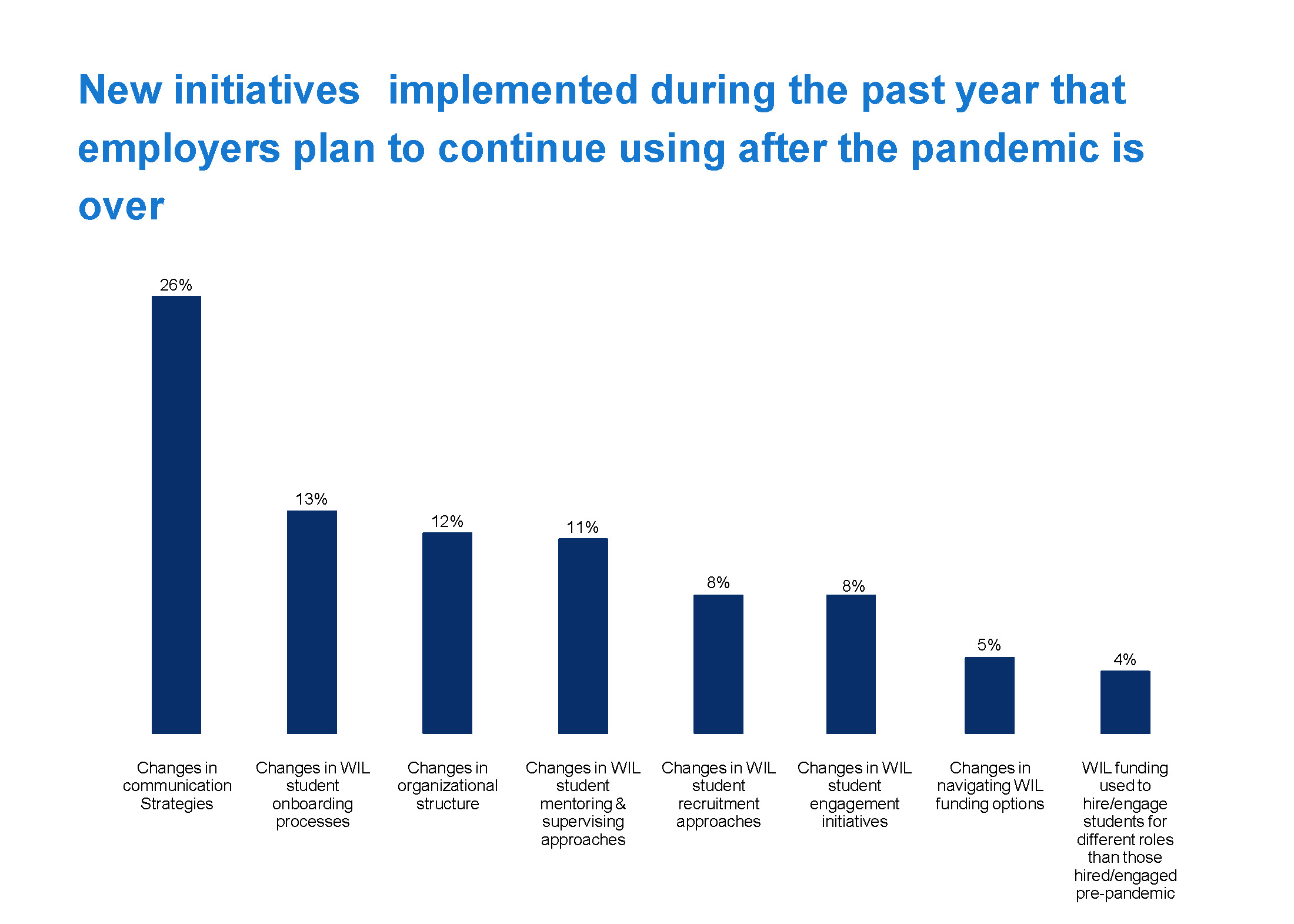
These initiatives included using tools like Zoom, MS Teams, and Slack not only for regular meetings and team building activities, but also for onboarding and recruiting. Larger employers created virtual cohorts for WIL students to connect with one another, as well as ways to network with others in the organization and in other departments. Smaller employers created a buddy system to help orient students.
4. Funding availability will continue to affect WIL hiring decisions during the recovery
When the Spring 2021 survey asked employers about factors that will negatively impact WIL hiring for the next 6-12 months, not surprisingly financial issues are a top concern, with between 25-27% of respondents indicating challenges finding funding opportunities, obtaining funding, and with economic and financial issues.
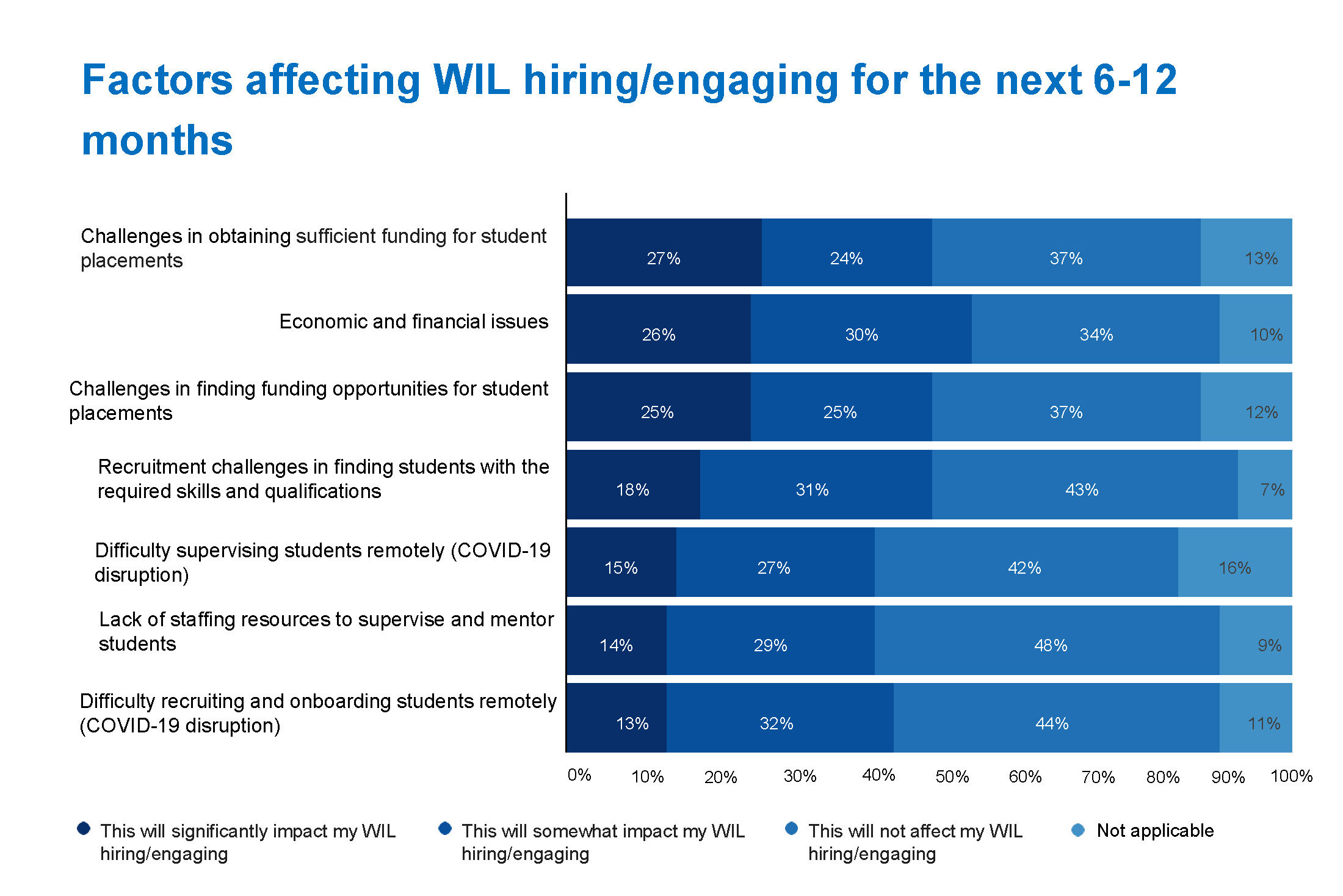
The need for help to navigate the complex world of funding and wage subsidies tops the list of useful resources, which is consistent with the results of the WIL survey conducted in partnership with the BC Chamber of Commerce in September 2020. This type of support remains an important value-add for post-secondary institutions when working with employers, particularly those new to WIL.
5. Expect the demand for WIL placements to increase and even exceed pre-pandemic levels
Despite the drop in WIL placements during the early months of the pandemic, the rebound during recovery has been significant and is expected to continue. According to Spring 2021 survey respondents, demand for co-ops, applied research projects, internships, work experience and apprenticeships will be higher than usual in the next 6-12 months. This outlook is very positive when compared to the outlook captured in the Fall 2020 survey.
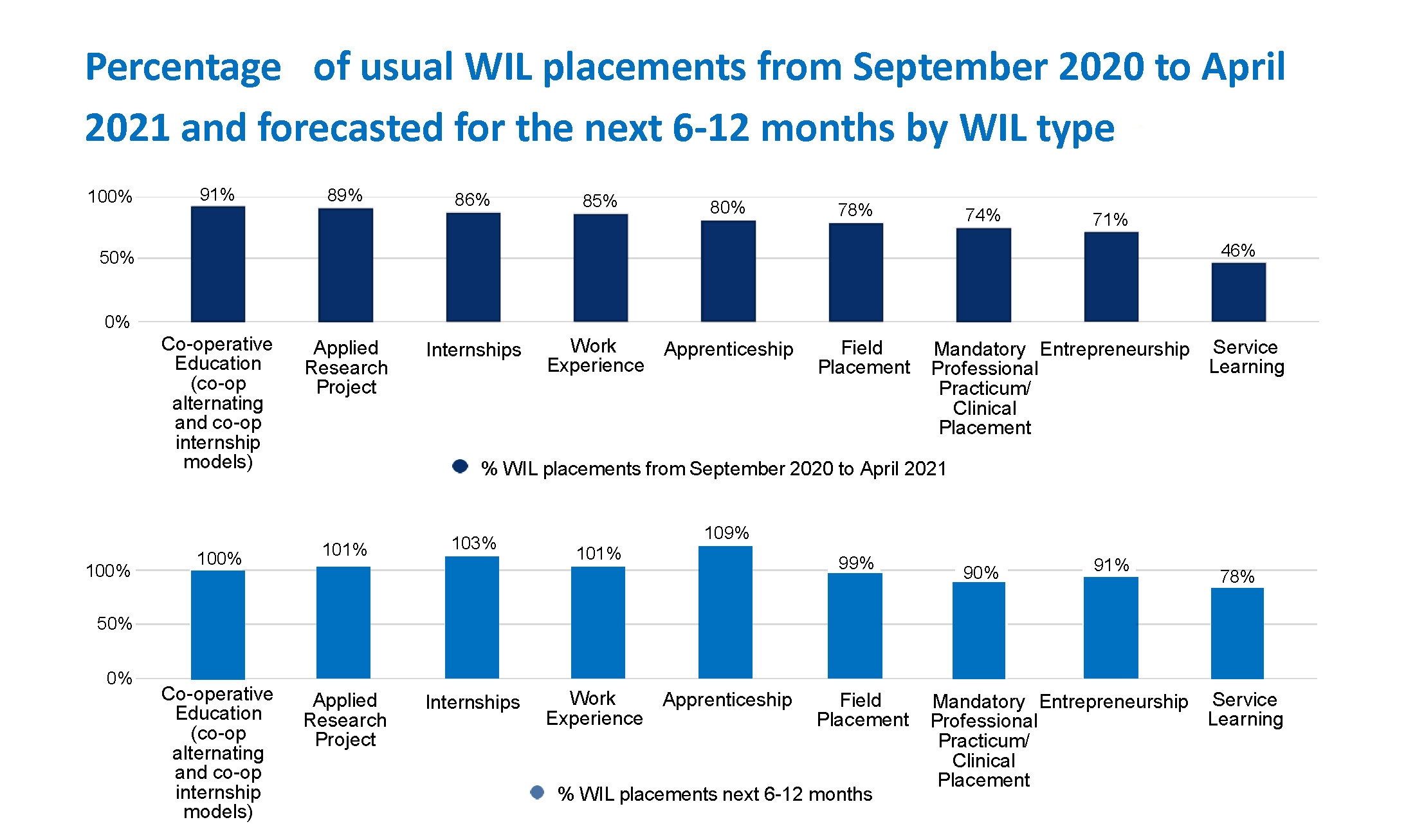
Across all regions in BC, survey respondents expect to hire WIL students above their usual rate, and hiring of new graduates is expected to be similarly positive.
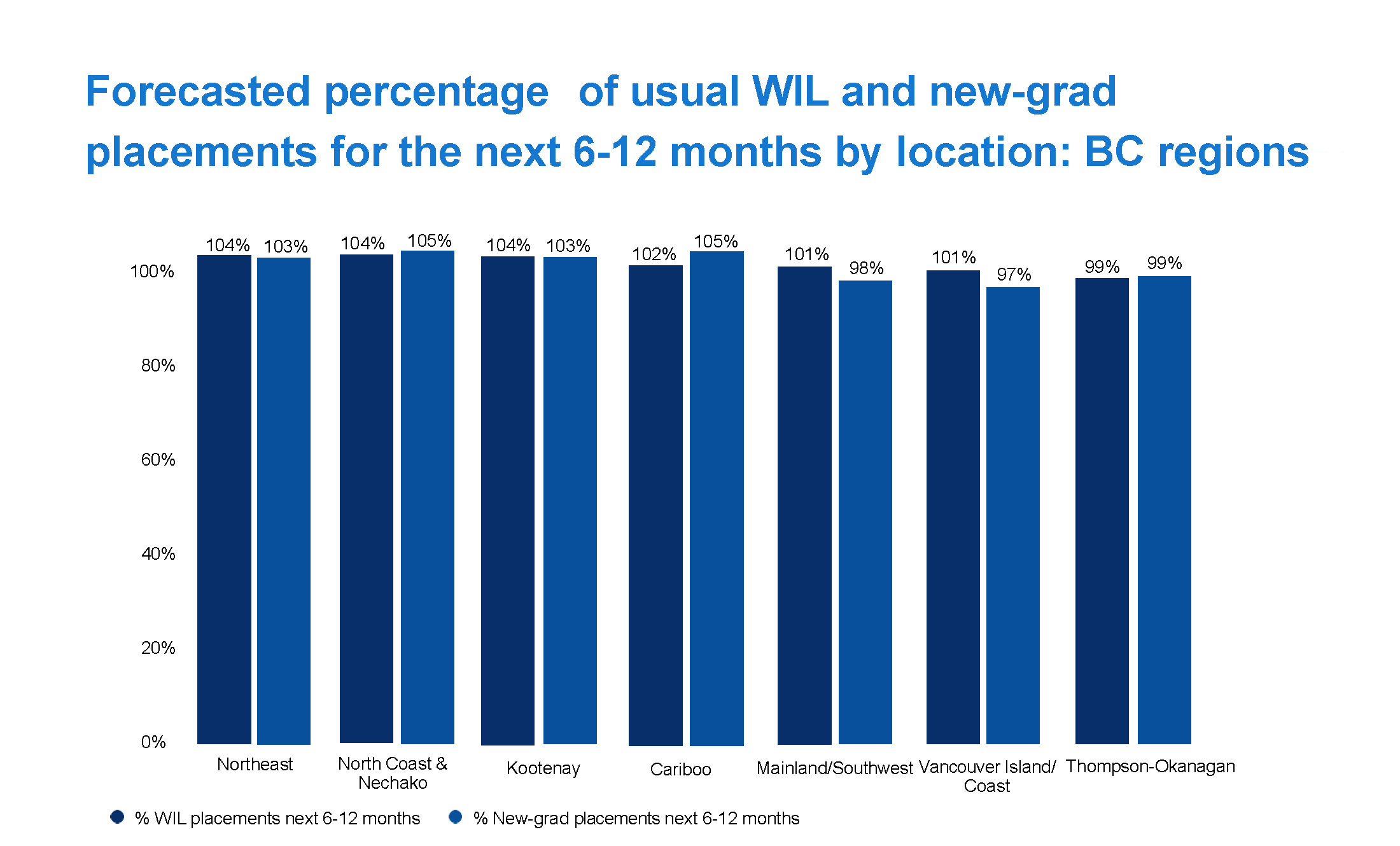
Not surprisingly, the accommodation and food services sector expects to see the highest growth in hiring WIL students (122%). As has been reported widely in the news, this sector is struggling to find qualified staff as many left the hospitality industry due to closures during the pandemic, presenting an opportunity for students and a potential challenge for WIL programs to meet the surge in demand. At the other end of the spectrum, the arts, entertainment and recreation sector is expecting only 75% of their usual WIL hirings, which may be due to the ongoing expected restrictions for large group venues and events.
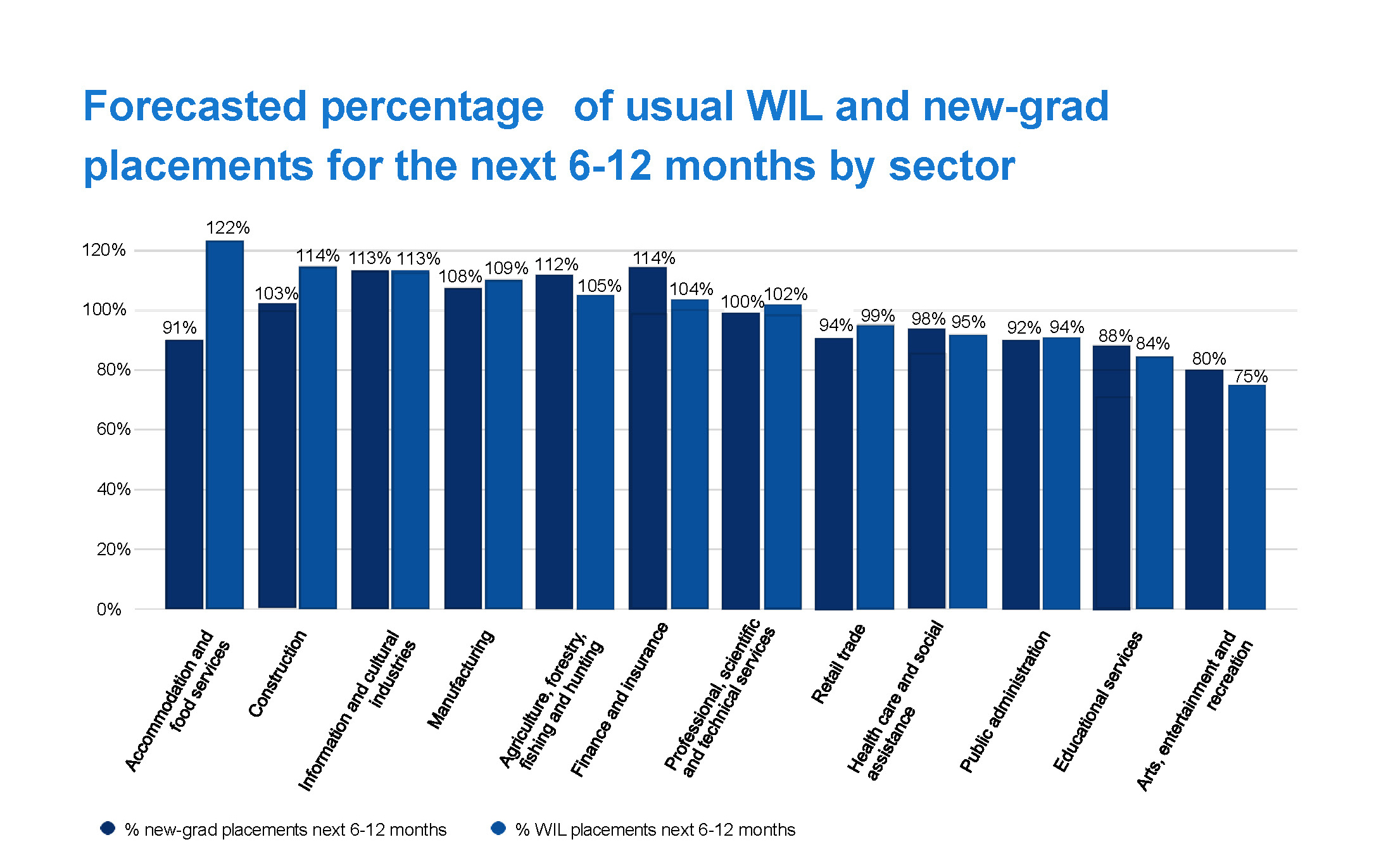
Where to find more
The key survey results, as presented at the ACE-WIL Townhall on June 22, are available in the Resource Hub as a PDF of the slide deck, which allows for easy sharing with colleagues. You can also watch the full presentation for additional commentary. A detailed written report will be available mid-July 2021.
If you are with one of the 19 participating institutions, please contact your BC WIL Council representative for the customized report that includes data from those WIL partners and employers who participated based on your invitation.
